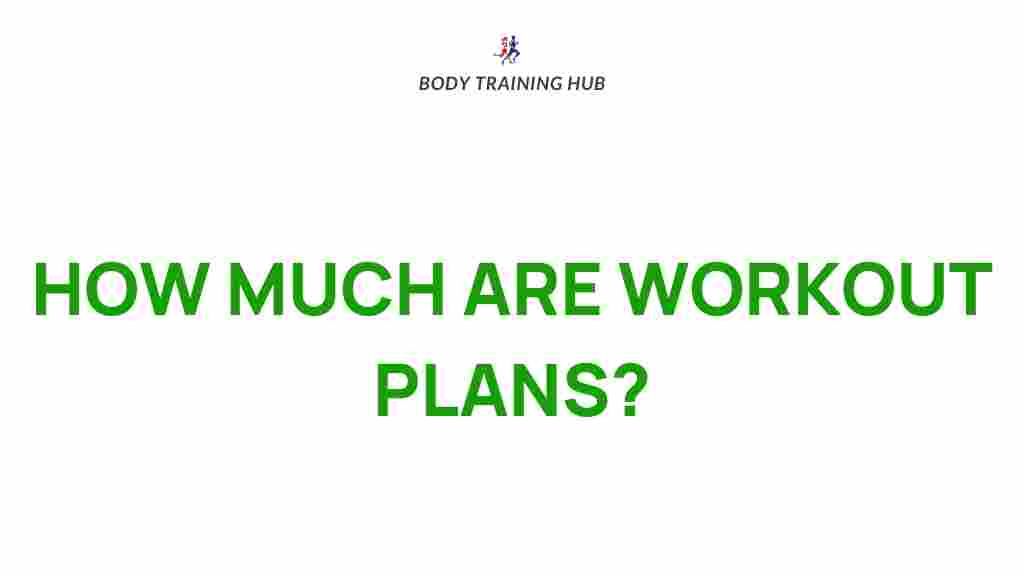Designing an effective fitness regimen is not just about going to the gym or running for hours. *Effective workout plans* are carefully structured using proven scientific principles to meet your unique fitness goals. Whether you’re aiming to build strength, lose weight, or boost endurance, understanding the science behind workout plans is essential to achieving sustainable success.
Why Workout Plans Are Essential for Fitness Success
Having a structured workout plan isn’t just for professional athletes or bodybuilders. It’s a proven way to maximize results while minimizing the risk of injury. Here’s why:
- Clarity: A well-defined plan eliminates guesswork, keeping you focused on your goals.
- Consistency: Following a structured plan ensures regularity in your workouts.
- Efficiency: Maximizing time at the gym or during home workouts with targeted exercises.
Understanding how to craft *effective workout plans* can transform your fitness journey into a rewarding and efficient process.
Key Components of Effective Workout Plans
A solid workout plan should include the following key components:
- Warm-up: Prepares your body for physical activity, reducing the risk of injury.
- Main Workout: A mix of strength training, cardio, and flexibility exercises tailored to your goals.
- Cool-down: Aids recovery by reducing muscle stiffness and improving flexibility.
- Rest Days: Crucial for muscle recovery and growth.
The Science Behind Creating Effective Workout Plans
Creating workout plans based on science involves understanding principles like progressive overload, specificity, and periodization. These elements work together to optimize performance and results.
Progressive Overload
This principle states that to improve strength, endurance, or muscle size, you must gradually increase the intensity of your workouts. This can be achieved by:
- Increasing the weight or resistance.
- Adding more repetitions or sets.
- Reducing rest time between exercises.
Specificity
Your workout plan should align with your specific goals. For example:
- Focus on resistance training for muscle building.
- Incorporate high-intensity interval training (HIIT) for fat loss.
- Practice endurance exercises like running or cycling for stamina improvement.
Periodization
This involves dividing your workout plan into distinct phases, each focusing on a different goal. For instance:
- Hypertrophy phase for muscle growth.
- Strength phase for increasing power.
- Endurance phase for stamina.
Step-by-Step Guide to Building Workout Plans
Follow these steps to create a workout plan that’s tailored to your needs:
Step 1: Define Your Goals
Begin by identifying your primary fitness objectives. Are you looking to lose weight, build muscle, or enhance overall health? Clear goals help determine the structure of your plan.
Step 2: Assess Your Fitness Level
Evaluate your current physical condition through self-assessment or a professional fitness test. This step ensures your plan starts at an appropriate intensity level.
Step 3: Choose Your Exercises
Incorporate a mix of exercises that target major muscle groups and align with your goals. A balanced routine could include:
- Squats, deadlifts, and lunges for lower body strength.
- Bench press, push-ups, and pull-ups for upper body strength.
- Cardio activities like running or swimming for heart health.
Step 4: Set a Schedule
Decide how many days per week you’ll work out and allocate time for each session. A common approach is:
- Strength training: 3-4 days per week.
- Cardio: 2-3 days per week.
- Flexibility and mobility: 1-2 days per week.
Step 5: Track and Adjust
Monitor your progress and adjust your plan as needed. Keep a workout log to track weights, sets, and repetitions, making incremental changes for continued improvement.
Troubleshooting Common Workout Plan Issues
If you’re not seeing results, consider these troubleshooting tips:
- Plateauing: Introduce new exercises or increase intensity to overcome fitness plateaus.
- Injury: Ensure proper form and avoid overtraining by incorporating rest days.
- Lack of Motivation: Set smaller milestones and reward yourself for achieving them.
Still struggling? Learn how to optimize your routine with expert guidance from this comprehensive fitness resource.
Tools and Resources for Designing Workout Plans
Many tools can aid in creating and maintaining workout plans. These include:
- Fitness apps for tracking progress.
- Wearable devices to monitor activity and heart rate.
- Guides and templates for structured planning.
Explore more on our Fitness Resources Page for additional tips and tools.
Conclusion
Effective workout plans are the foundation of fitness success. By combining science-backed principles with your personal goals, you can design a routine that not only meets your needs but also keeps you motivated and injury-free. Start small, stay consistent, and remember to adjust your plan as you grow stronger. Armed with the right knowledge and resources, your fitness journey can be as enjoyable as it is transformative.
This article is in the category Training Guides and created by BodyTraining Team

1 thought on “Unveiling the Science Behind Effective Workout Plans”